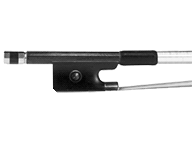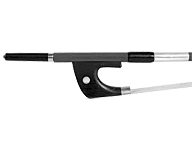Your shopping cart is currently empty.
If you have not already done so, you can login to your account to see any items that may be saved in your cart. Once logged in, you may also add items to the cart that you saved previously to your wishlist.
Instrument Overview

The bass is a member of the string instrument family. You may also hear people refer to it as the double bass, upright bass, string bass, or acoustic bass. It is the lowest pitched string instrument. The bass is sometimes played with a bow and is sometimes plucked. Orchestral music often calls for both techniques to be used. There is a device called a pickup that can be installed on an acoustic bass to amplify it.
Rock and popular music typically calls for an electric bass, which is very closely related but is a different instrument. (It's smaller and looks like an electric guitar.)
The bass is available in smaller sizes to accommodate young students. Although basses advertised as 7/8 or 4/4-size do exist, the 3/4-size double bass is by far the most common and is the standard size for most musicians.
Bass sizing is less standard than many other instruments, so it is difficult to give hard and fast rules for sizing students. See the age charts below for a rough guideline, but double-check the size with your teacher. It is important for the player to be comfortable and not struggle with an improperly sized instrument. The standard size bass for adults is ¾. 7/8 and 4/4 size basses are made, but less commonly used.
With an instrument in hand you can check the size as follows; when the player and bass are both standing upright the bridge should be about the same height as the player's right hand and the fingerboard nut should be opposite the forehead near eye level. The student should be able to reach the end of the fingerboard easily.
| Bass Size | Height | Player's Age |
|---|---|---|
| 1/8 | 3.5 to 4 feet | 5 to 7 years old |
| 1/4 | 4 to 4.5 feet | 7 to 9 years old |
| 1/2 | 4.5 to 5.5 feet | 9 to 13 years old |
| 3/4 | over 5 feet | over 13 years old |
Bass bows come in one of two styles: French or German. Each has its own shape and is held differently. The French bow is held like the bows of other orchestral string instruments, while the German bow is held with an underhand grip. If you do not know what type of bow to get, please ask your music teacher.
This is what a French bow looks like: |
This is what a German bow looks like: |
Other Resources
Double Bass Facts